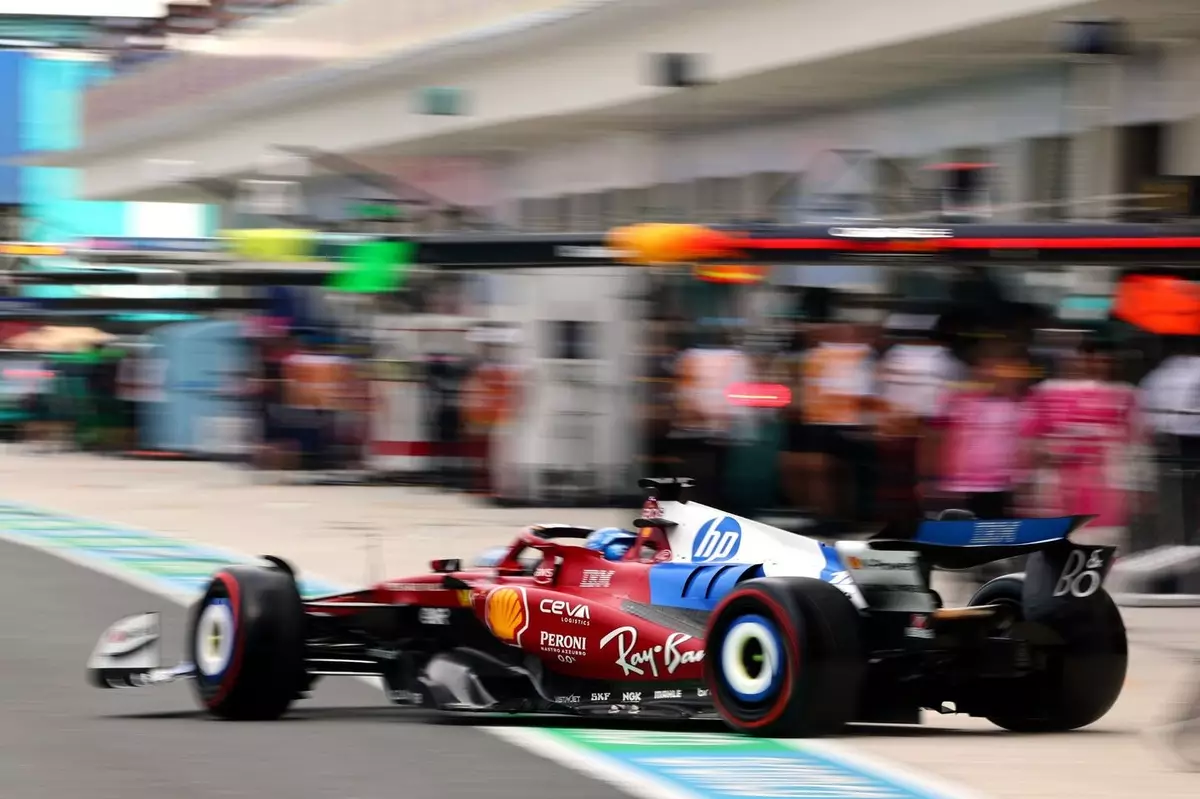The world of Formula 1 is a merciless arena where milliseconds matter, and Charles Leclerc’s recent performance in Miami at the 2025 Grand Prix exemplifies the conflicting reality of ambition and achievement. Despite his insistence that Ferrari is extracting every drop of potential from their latest vehicle, the stark reality that left him languishing in eighth position paints a different story. This situation raises a critical question: how can a team with such high expectations fall so short on race day? The undermining of talent and hard work can be disheartening, and Leclerc’s results are emblematic of a deeper issue—Ferrari’s failure to deliver absolute performance on the grid.
Leclerc’s much-anticipated stakes in Miami were thwarted by both unfortunate circumstances and raw racing dynamics. After aquaplaning into the wall prior to the sprint race, his absence from what was supposed to be an operationally pivotal event only added to the complexity of his team’s weekend. In the crucible of competition, this absence creates a ripple effect, emphasizing the interconnected nature of team performance: individual laps are but one aspect of a much larger machine. Hamilton’s struggle, dropping him to 12th, underscores the issues plaguing the entire Ferrari camp; both drivers grappled with a car that simply lacked the raw speed to compete.
Evaluating Performance: A Hard Hit on Morale
The post-qualifying frustration voiced by Leclerc is palpable. He was clear in stating that while he felt good about his performance, the results glaringly indicate that Ferrari is below par compared to rivals like Red Bull, McLaren, and Mercedes. This disconnection between driver confidence and car performance points to a critical gap in the engineering prowess that Ferrari is known for. It becomes increasingly concerning when athletes believe they are maximizing their potential yet still underperform. The disappointment is not merely personal; it seeps into the team ethos and endangers morale, creating an environment of continuous questioning and doubt.
Interestingly, Leclerc’s high-speed success in Jeddah further contrasts with the glaring deficiencies at the Miami International Autodrome, a track characterized by its slower, more technical corners. The challenges here are magnified, highlighting the lack of downforce that Ferrari is currently grappling with. He candidly acknowledged that slower circuits serve to underline their shortcomings and ultimately raises a daunting reality: competitors are showcasing both superior engineering and precise strategy that Ferrari must address swiftly if they hope to challenge for podium finishes.
Track Conditions: A Catalyst for Mistakes
A significant layer to the Miami debacle was Leclerc’s crash while navigating adverse weather conditions. His admission that taking out intermediates was a miscalculation reflects the high-pressure environment drivers face; racing under such circumstances demands not just technical skill but also tactical acumen in reading the track. As the team dissects the failures of this outing, a collective understanding of track conditions must take precedence in future strategies, ensuring that such mistakes do not compound the lack of speed.
Moreover, this incident serves as a stark reminder of the unpredictability inherent in racing. The focus needs to be on learning and adapting rather than merely managing immediate setbacks. In a sport riddled with elements beyond one’s control, it’s critical for teams to develop resilience and make the necessary adaptations to technology and tactics accordingly.
Looking Ahead: The Need for Rapid Improvement
As Ferrari wades through this tumultuous chapter, there are pressing calls for improvement in both engineering and race strategy. Leclerc’s podium finish two weeks prior may represent a flicker of hope, but it also highlights the inconsistency permeating the team’s performance. With significant challenges ahead in the 2025 season, Ferrari cannot afford to linger in mediocrity.
In Formula 1, trends shift quickly; teams ascend and fall from grace at an accelerated pace. What remains paramount is how swiftly Ferrari can ally data analysis, driver feedback, and engineering prowess to reestablish their competitive edge. The key now is not just a yearning for pace but a firm commitment to innovative solutions as the season unfolds.

